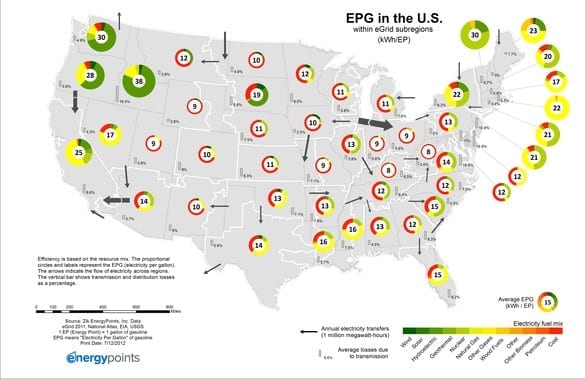EnergyPoints, a data mining startup, has developed a way to compare whether a wind farm or a desalination plant will do more good–using just one simple number.
There are any number of problems facing the world right now, and a limited amount of resources and time to handle them. Sometimes, you have to think about triage. But the scope of the problems can make that hard. What’s more important: creating clean energy or managing water scarcity. Those two issues are measured differently, making it hard for non-experts to compare them analytically.
Energy Points is a new startup on a mission to quantify sustainability. Instead of using different ways of conceptualizing consumption (say, of water, electricity, waste, transportation and the like) the company smooths out diverse units and translates them into one common denominator: the amount of energy it takes to generate one gallon of gasoline.
The result is that companies (and eventually individuals) can conduct one-to-one comparison of any sustainability project or resource consumption, regardless of the native unit of measure (kWh, gallons, BTUs, CO2 abated). All of these units of measurement are now expressed in energy per gallon, the same way miles per gallon represents the miles you get for one gallon of gas in a car.
“We’d like people to think quantitatively about energy,” says Ory Zik, the founder and CEO of Energy Points. “We’d like to become the de facto standard for the way you think about energy. It’s just the same way you buy a car and have a miles-per-gallon rating of 30. Instead, you buy a house, and have an energy-per-gallon rating of 25 and you know what that means.”
Zik says that there are serious problems with the way that people try to assess environmental sustainability. To start, there is no sensitivity to location and time, and there is often a separation between renewable energy and energy efficiency, which in reality are two sides of the same coin. But the biggest problem? The units just don’t match up. If a sustainability officer at a company tries to parse some stats: say the company’s carbon footprint increased by 5 million tons, the water footprint decreased by 1 million gallons, and the company generated 200 tons of waste. “The problem isn’t the availability of data, it’s the interpretation,” says Zik.
By leveling the playing field, Energy Points can give companies a very clear sustainability budget. The company crunches the numbers for local parameters for energy production and water scarcity in each state or metro area, and expresses the outcomes in EPG. For example, with water data, the company integrates information from every water facility in the country and monitors satellite images and real-time data flows from USGS to make sure their data is comprehensive and reliable.
via FastCoExist – KATHARINE GAMMON
The Latest Streaming News: Sustainability Impact updated minute-by-minute
Bookmark this page and come back often
Latest NEWS
Latest VIDEO








